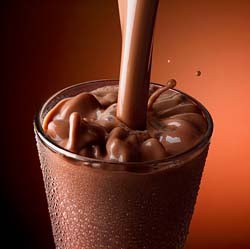Beta-alanine redux: Same question, still no answer. But they still recommend you take it.
 It’s been three years since I’ve written about beta-alanine. I do monitor the literature from time to time to see what’s new in the BA research world. But really, there isn’t anything new. There still is no definitive answer that BA does anything meaningful. The latest BA study not only failed to find anything meaningful, but also failed to plan to find anything meaningful, allowing the gods of statistical probability to decide if the fruits of their labour would be met with reward.
It’s been three years since I’ve written about beta-alanine. I do monitor the literature from time to time to see what’s new in the BA research world. But really, there isn’t anything new. There still is no definitive answer that BA does anything meaningful. The latest BA study not only failed to find anything meaningful, but also failed to plan to find anything meaningful, allowing the gods of statistical probability to decide if the fruits of their labour would be met with reward.
Kern BD, Robinson TL. Effects of beta-alanine supplementation on performance and body composition in collegiate wrestlers and football players. Journal of Strength and Conditioning Research, 25(7):1804-1815, 2011. Read More...
It was bound to happen
 This blog entry is courtesy of Fran Mayo who read an article in “Runner’s World” about some of the benefits of drinking pomegranate juice. It was fairly inevitable that I would get around to talking about pomegranate juice. It is, after all, all the rage right now and POM is currently in the media regarding some dubious health claims.
This blog entry is courtesy of Fran Mayo who read an article in “Runner’s World” about some of the benefits of drinking pomegranate juice. It was fairly inevitable that I would get around to talking about pomegranate juice. It is, after all, all the rage right now and POM is currently in the media regarding some dubious health claims.
There are lots of reasons to drink pomegranate juice. Personally, when it first came out as a commercial product, I thought it was a pure novelty. I mean, have you ever EATEN a pomegranate? It takes FOREVER. The whole idea of juicing enough fruit to make a whole bottle of pure pomegranate juice was just unfathomable. So from my perspective, one of the reasons to drink pomegranate juice is because you can. All that pomegranate-y taste without the painstaking work. Read More...
If you’re going to claim to improve hypertrophy, measure hypertrophy. (P.S. Your experiment has to be replicable)
 There’s been lots of attention to one of the latest studies out of McMaster University on low-load high volume resistance exercise and protein synthesis. I, for one, am not beneath jumping on bandwagons of any kind. However, let’s strike to the core of the matter, as opposed to dancing around all the peripheral (and also somewhat inconsequential) criticisms of the study.
There’s been lots of attention to one of the latest studies out of McMaster University on low-load high volume resistance exercise and protein synthesis. I, for one, am not beneath jumping on bandwagons of any kind. However, let’s strike to the core of the matter, as opposed to dancing around all the peripheral (and also somewhat inconsequential) criticisms of the study.
Burd NA, West DWD, Staples AW et al. Low-load high volume resistance exercise stimulates muscle protein synthesis more than high-load low volume resistance exercise in young men. Public Library of Science 5(8): e12033, 2010. Read More...
Actually, yes, you can.
 The amount of time one rests between sets is an often missed, or often underestimated training variable. It’s also one of the least studied variables when it comes to looking at hypertrophy as the outcome (as opposed to strength, or other performance variables, or even biochemical markers). So it is a treat to see a study where hypertrophy is the variable of interest, and where measurement of hypertrophy is truly a direct measurement. While not every investigator can measure hypertrophy in this way, it does go to show that “It can’t be done,” or “It will never get done,” are just words, because these researchers, in the words of the famous Dos Remedios, “did work.”
The amount of time one rests between sets is an often missed, or often underestimated training variable. It’s also one of the least studied variables when it comes to looking at hypertrophy as the outcome (as opposed to strength, or other performance variables, or even biochemical markers). So it is a treat to see a study where hypertrophy is the variable of interest, and where measurement of hypertrophy is truly a direct measurement. While not every investigator can measure hypertrophy in this way, it does go to show that “It can’t be done,” or “It will never get done,” are just words, because these researchers, in the words of the famous Dos Remedios, “did work.”
de Souza TP, Fleck SJ, Simao R, et al. Comparison between constant and decreasing rest intervals: Influence on maximal strength and hypertrophy. Journal of Strength and Conditioning Research 24(7) 1843-1850, 2010. Read More...
Chocolate milk: Yummy, but not special.
 The ‘original’ chocolate milk study came out in 2006. And it seems like the whole chocolate milk thing just won’t die. Alas, document delivery has yet to deliver the article to my inbox yet (have I mentioned how much I love the Internet?), so I leapt forward in time to look at another study in the small puddle of chocolate milk studies.
The ‘original’ chocolate milk study came out in 2006. And it seems like the whole chocolate milk thing just won’t die. Alas, document delivery has yet to deliver the article to my inbox yet (have I mentioned how much I love the Internet?), so I leapt forward in time to look at another study in the small puddle of chocolate milk studies.
This study doesn’t quite get at the question, “How important, exactly, is post-workout nutrition?” but rather, “How does chocolate milk compare to other forms of post-workout nutrition?” Read More...
Feel the PUMP! Um..that’s it.
First off, I LOVE how this article starts, “The use of nutritional supplements continues to increase with athletes and recreationally active trainees…” That’s right, you gym rats (me included); we’re not athletes. Quit pretending. It’s okay.
Snarkiness aside, I’ve been wanting to discuss nitric oxide or NO supplements (as well as pre-workout drinks) for a long time; but oddly enough, the literature was incredibly sparse on the topic in terms of studies involving humans and outcomes training individuals would be interested in. NO-type ingredients seem to be in everything, to the point where you don’t have to _decide_ to take an NO-related ingredient, you probably just are, particularly if you’re taking anything that is designed as a pre-workout supplement. In fact, it’s amazing that they can stuff more than 30 ingredients into a single pre-workout drink such that it will still fit into a couple of scoops. Read More...
If research isn’t the "real world", then what can it show us?
 When I was in physics class in my undergraduate degree, I remember doing an experiment to demonstrate the laws of momentum. I don’t remember the specifics of the experiment, but I do remember using an air-table (similar to an air hockey table, but smaller) and pucks (similar to air hockey pucks, but smaller) to demonstrate how conservation of momentum occurs in an almost frictionless environment.
When I was in physics class in my undergraduate degree, I remember doing an experiment to demonstrate the laws of momentum. I don’t remember the specifics of the experiment, but I do remember using an air-table (similar to an air hockey table, but smaller) and pucks (similar to air hockey pucks, but smaller) to demonstrate how conservation of momentum occurs in an almost frictionless environment.
Now, I don’t know about you, but I don’t live in a frictionless world. Those of you who live on air-hockey-table-like-environments, I can’t speak for you. And back then, I probably thought very similarly to the way some people think about research now: “If nothing on Earth is truly frictionless, short of air-hockey tables and mag-lev devices, why do we have to do this experiment?” The answer back then, was, “Because we’re telling you do it, so quit bitching already and push the friggin’ puck.” But I’ve tried that answer on people who ask, “We never use supplement X/training technique Y in tightly controlled situations, so how do the results of these studies help us?” and a) it doesn’t go over very well, and b) they’re really confused about some mysterious puck. Read More...
How much would you pay for 2 more reps at the end of your workout?
 The concept of progressive overload is a cornerstone to any weight-training program. Lifting more weight, or lifting the same weight for more reps is the goal that is theorized to produce muscle growth, or better performance (however you decide to measure that).
The concept of progressive overload is a cornerstone to any weight-training program. Lifting more weight, or lifting the same weight for more reps is the goal that is theorized to produce muscle growth, or better performance (however you decide to measure that).
Citrulline malate has been an ingredient in a multitude of sport supplements. It is theorized to work through 3 proposed mechanisms: 1) malate is proposed to accelerate ammonium clearance and citrulline is proposed to facilitate lactate metabolism (these effects however, were noted in microbial models, i.e. germs in a dish); 2) citrulline malate has been noted to protect against acidosis which is proposed to counter fatigue; 3) Citrulline malate is proposed to increase nitric oxide production, which has been shown to have many potentially physiologically beneficial effects (though none of these effects may affect the stuff you’re concerned about like muscle growth, fat loss, or any performance benefit). Read More...
Six people. One study. No practical outcomes. You drink protein before working out.
 There is a neat research tool that I use a lot. It’s called the Web of Science. A lot of you use PubMed to find articles. You punch in a topic and it spits out a list of studies about that topic (roughly). Web of Science is a similar database, but it’s like a reverse lookup for studies. I punch in a study and Web of Science tells me about all the studies that have citied that study (i.e. have listed it in the references). This is an extremely useful tool when looking for follow-up studies.
There is a neat research tool that I use a lot. It’s called the Web of Science. A lot of you use PubMed to find articles. You punch in a topic and it spits out a list of studies about that topic (roughly). Web of Science is a similar database, but it’s like a reverse lookup for studies. I punch in a study and Web of Science tells me about all the studies that have citied that study (i.e. have listed it in the references). This is an extremely useful tool when looking for follow-up studies.
We’ve already talked about very recent evidence about pre-workout protein and energy expenditure, so this week, I wanted to find the most recent evidence of using pre-workout protein for muscle growth, since that’s probably the REAL reason you’re drinking protein before a workout. While there are some studies that have looked at post-workout protein as well as both pre and post-workout protein, surprisingly, there haven’t been many studies on just pre-workout protein use and muscle growth. Read More...
An iPod Shuffle! For almost free! (Oh, and protein timing)
Eating protein before and after workouts has been touted to be one of the most important things you can do to decrease DOMS, increase protein synthesis, prevent protein breakdown, and in this article, increase your resting metabolic rate. The other claims…maybe I’ll tackle those another day (This post is hellishly long enough) Read More...